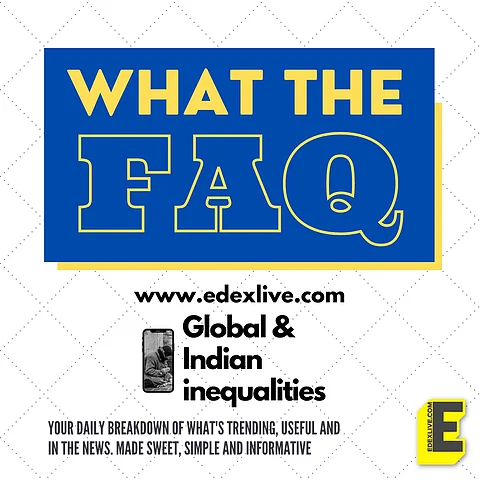

The World Inequality Report, 2022, which was released on December 7 has been on the front pages of most major newspapers. Deemed to be one of the most reliable reports of global inequalities, it is authored by economist and co-director of the World Inequality Lab, Lucas Chancel, along with economists Thomas Piketty, Emmanuel Saez and Gabriel Zucman. But why should it matter so much to us in India?
You're probably wondering: Where does India stand in the World Inequality Report?
In the preface of the report, Nobel laureate economists Abhijit Banerjee and Esther Duflo said that India was “among the most unequal countries” in the world. According to the report, India remains to be a “poor and very unequal country, with an affluent elite,” where 57 per cent of the national income is held by the top 10 per cent, while the share of the bottom 50 per cent is merely 13 per cent in 2021. This is just the tip of the iceberg for India. The report has also flagged a drop in global income during 2020. This is attributed primarily due to the impact of “South and Southeast Asia, and more precisely” India. “When India is removed from the analysis, it appears that the global bottom 50 per cent income share actually slightly increased in 2020,” states the report
Is this inequality in India because of the debilitating impact of the COVID-19 pandemic?
Well, the report does acknowledge that COVID-19 has deepened the divide between the rich and the poor, the haves and the have nots. However, it makes it very clear that the world has long been unequal. The report reads, "Since the mid-1980s, deregulation and liberalisation policies have led to one of the most extreme increases in income and wealth inequality observed in the world." And then it adds something worth pondering upon. It reads, "While the top 1 per cent has largely benefited from economic reforms, growth among low and middle-income groups has been relatively slow and poverty persists."
What other regions have shown red signs of inequality?
It is a cause of concern that global inequalities, according to the report, seem to be about as great today as they were at the peak of Western imperialism in the early 20th century. Moreover, the Middle East and North Africa (MENA) are the most unequal regions in the world, whereas Europe has the lowest inequality levels, the report says. In Europe, the top 10 per cent income share is around 36 per cent, whereas in MENA it is 58 per cent. In East Asia, the top 10 per cent makes 43 per cent of total income and in Latin America, the share is 55 per cent. According to the report, even as countries have become richer over the last 40 years, their governments have become significantly poorer, a trend which has been magnified due to the pandemic. “The share of wealth held by public actors is close to zero or negative in rich countries, meaning that the totality of wealth is in private hands."
How is a country's inequality even calculated?
The aim of the report is to collate the most recent, publicly available, inequality data from around the world. This is not always easy, as some countries, including India, have made it difficult to access trustworthy data. In the context of the Indian government, the report reads, “Over the past three years, the quality of inequality data released by the government has seriously deteriorated, making it particularly difficult to assess recent inequality changes." The report combines different data sources: national accounts, survey data, fiscal data, and wealth rankings. While GDP is commonly used to compare levels of economic welfare across countries, the authors of the report state that it is not satisfactory. Hence, the report uses the concept of national income.
